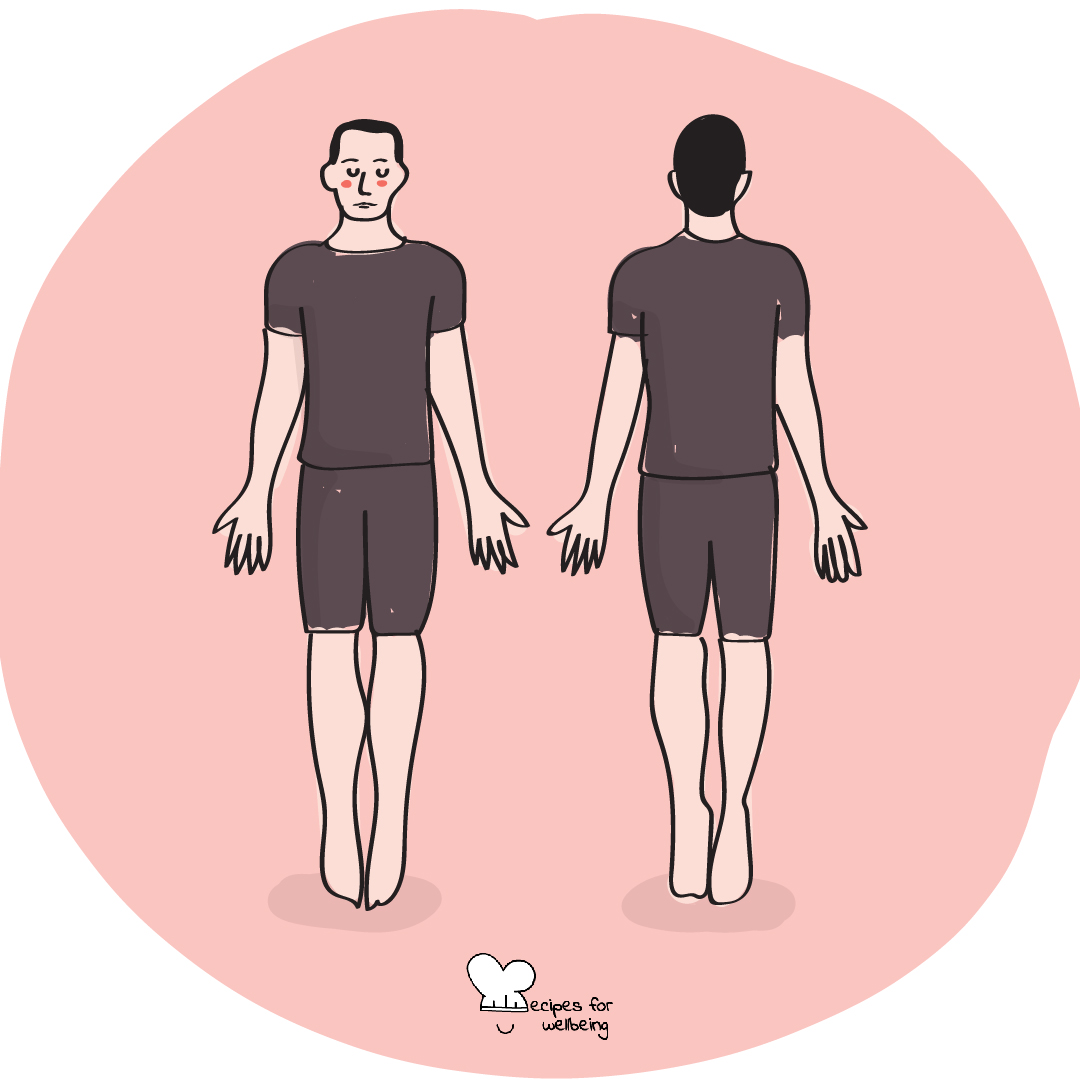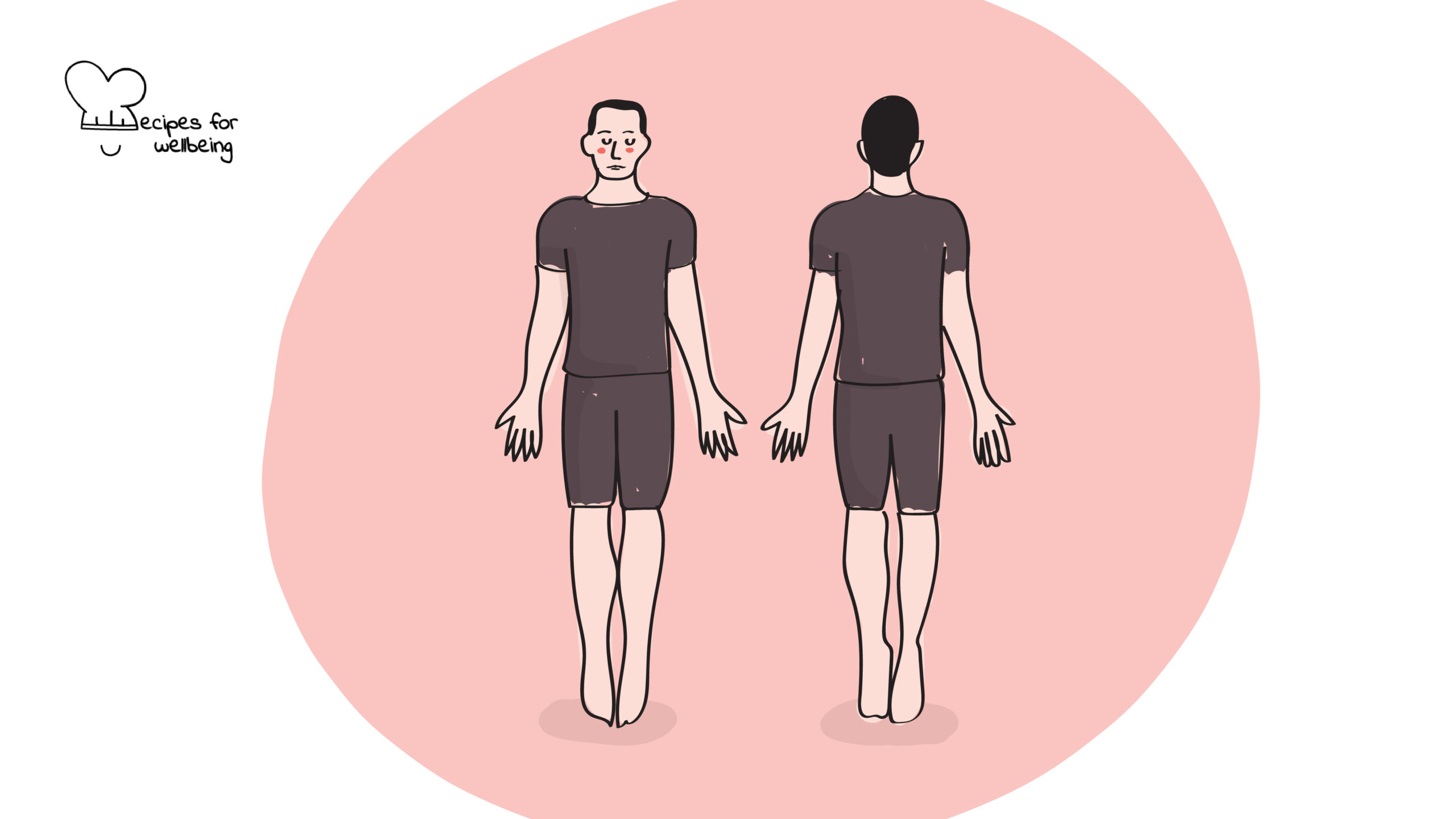
Standing somatic practice
Healing doesn’t mean the damage never existed. It means the damage no longer controls our lives. ―Unknown
👥 Serves: 1 person
🎚 Difficulty: Easy
⏳ Total time: 10 minutes
🥣 Ingredients: A quiet place with no distractions
💪 Nutritional values: Groundedness, Calmness, Open-mindedness, Peace, Harmony

Standing somatic practice
📝 Description
Ground yourself with a standing somatic practice.
Somatic practice is any practice that incorporates a mind-body connection to help you survey your internal self, while closely listening for signals from your body about areas of pain, stress, discomfort, or imbalance. These practices allow you to pause and better understand yourself and how you may hold onto feelings in your body.
While somatic practices have become increasingly popular in the Western world in the last few decades, they draw from ancient Eastern philosophy and healing practices, such as tai chi and qi gong. The idea of the practice is to perform each movement in a way that teaches you about being in line with your body. It is intended to unlock emotional awareness and can be particularly useful to work through difficult emotions.
This recipe has been inspired by the work of The Wellbeing Project and has been adapted by our wellbeing content writer collaborator Marissa Del Mistro.
👣 Steps
Step 1 – Preparing (1’)
Find yourself a quiet space where you will not be disturbed for the next 10 minutes. Standing normally, allow yourself to relax as much as possible. You don’t need to have perfect posture. Let your arms hang loosely by your side, then close your eyes.
Step 2 – Standing somatic practice (10’)
Begin to scan your body, slowly, focusing completely on your internal sensations. Starting from your toes and feet, spend at least 5-10 seconds noticing how each part of your body feels as you slowly scan upward, ending with your neck and head. Take as long as you want and never rush.
As you do this, also articulate to yourself what you are feeling, in your mind or out loud. For example, you may think, “my weight is more on my right foot than my left”, “My left shoulder is higher than my right”, “My neck is tense”, “Are my knees relaxed?”, or “My hips are tipping forward”.
Some people find it difficult to internally sense their body the first time they do this standing practice. This is perfectly okay, and it is usually a sign you will benefit from doing these practices regularly, as it may be a sign of disconnection from the body.

